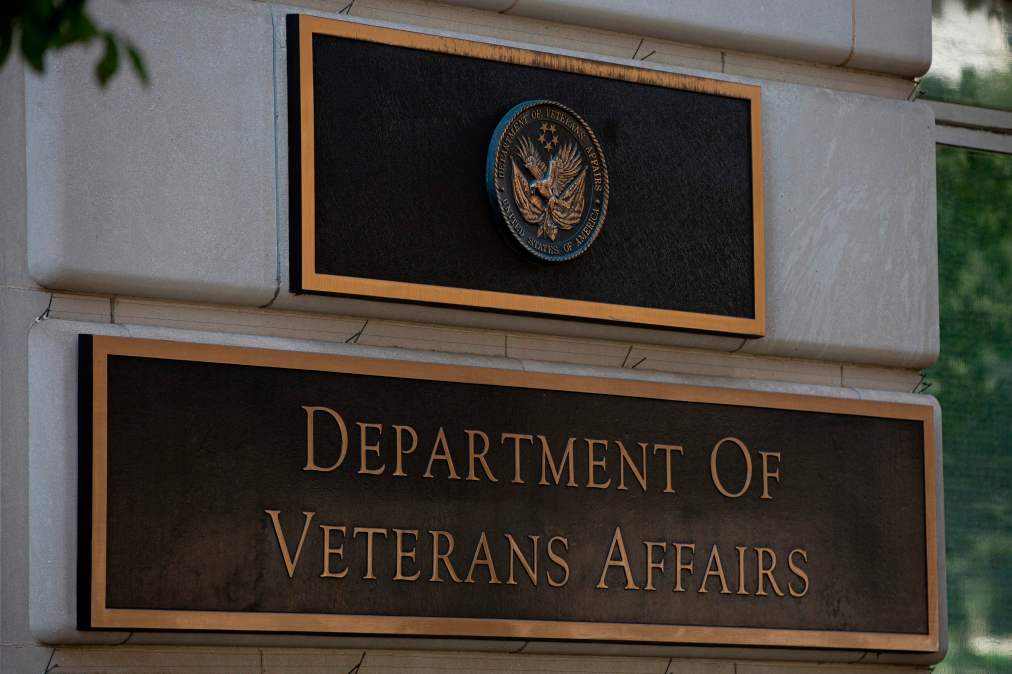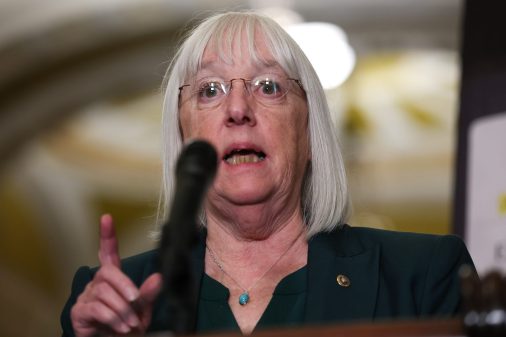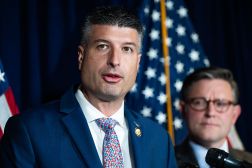VA’s technical infrastructure is ‘on pretty good footing,’ CAIO and CTO says

Working under the threat of technology-related budget cuts that has elicited concern from both sides of the aisle, the Department of Veterans Affairs has managed to make progress on several tech priorities, the agency’s artificial intelligence chief said last week.
In an interview with FedScoop, Charles Worthington, the VA’s CAIO and CTO, said the agency is engaged in targeted hiring for AI experts while also sustaining its existing modernization efforts. “I wish we could do more,” he said.
While Worthington wrestles with the proposed fiscal year 2025 funding reductions, the VA’s Office of Information and Technology also finds itself in the legislative crosshairs over modernization system upgrades, a supposed lack of AI disclosures and inadequate tech contractor sanctions and ongoing scrutiny over its electronic health record modernization initiative with Oracle Cerner.
Worthington spoke to FedScoop about the VA’s embrace of AI, the status of its modernization push, how it is handling budget uncertainty and more.
Editor’s note: The transcript has been edited for clarity and length.
FedScoop: I know that you’ve started your role as the chief AI officer at the Department of Veterans Affairs. And I wanted to circle back on some stuff that we’ve seen the VA engaged with this past year. The Office of Information and Technology has appeared before Congress, where legislators have voiced their concerns for AI disclosures, inadequate contractor sanctions, budgetary pitfalls in the fiscal year 2025 budget for VA OIT and the supply chain system upgrade. What is your response to them?
Charles Worthington: I think AI represents a really big opportunity for the VA and for every agency, because it really changes what our computing systems are going to be capable of. So I think we’re all going to have to work through what that means for our existing systems over the coming years, but I think really there’s hardly any part of VA’s software infrastructure that’s going to be untouched by this change in how computer systems work and what they’re capable of. So I think it’s obviously gonna be a big focus for us and for Congress over the next couple of years.
FS: I want to take a step back and focus on the foundational infrastructure challenges that the VA has been facing. Do you attribute that to the emerging technologies’ need for more advanced computing power? What does that look like?
CW: I think overall, VA’s technical infrastructure is actually on a pretty good footing. We’ve spent a lot of time in the past 10 years with the migration to the cloud and with really leaning into using a lot of leading commercial products in the software-as-a-service model where that makes sense. So, by and large, I think we’ve done a good job of bringing our systems up to standard. I think it’s always a challenge in the VA and in government to balance the priorities of modernization and taking advantage of new capabilities with the priorities of running everything that you already have.
One of the unique challenges of this moment in time is that almost every aspect of the VA’s operations depends on technology in some way. There’s just a lot of stuff to maintain; I think we have nearly a thousand systems in operations. And then obviously, with something like AI, there’s a lot of new ideas about how we could do even more [to] use technology and even more ways to further our mission.
FS: In light of these voiced concerns from legislators, as you progress into your role of chief AI officer, how do you anticipate the agency will be able to use emerging technologies like AI to its fullest extent?
CW: I think there’s really two priorities that we have with AI right now. One is, this represents an enormous opportunity to deliver services more effectively and provide great technology services to the VA staff, because these systems are so powerful and can do so many new things. One priority is to take advantage of these technologies, really to make sure that our operations are running as effectively as possible.
On the other hand, I think this is such a new technology category that a lot of the existing processes we have around technology governance in government don’t apply in exactly the same ways to artificial intelligence. So in a lot of ways, there are novel concerns that AI brings. … With an AI system that is, instead, taking those inputs and then generating a best guess or generating some piece of content, the way that we need to make sure that those systems are working effectively, those are still being developed. At the same time, as we’re trying to take advantage of these new capabilities, we’re also trying to build a framework that will allow us to safely use and deploy these solutions to make sure that we’re upholding the trust that veterans put in us to manage their data securely.
FS: In what ways is the agency prioritizing AI requirements, especially from the artificial intelligence executive order that we saw last October, and maintaining a competitive edge with the knowledge that the fiscal year 2025 budget has seen a significant clawback of funds?
CW: We are investing a lot in standing up, I would say, the AI operations and governance. We have four main priorities that we’re focused on right now. One is setting up that policy framework and the governance framework for how we’re going to manage these. We have already convened our first AI governance council meeting — we’ve actually had two of them — where we’re starting to discuss how the agency is going to approach managing our inventory of AI use cases and the policies that we’ll use.
The second priority is really focused on our workforce. We need to make sure that our VA staff have the knowledge and the skills they need to be able to use these solutions effectively and understand what they’re capable of and also their limitations. We need to be able to bring in the right sort of talent to be able to buy and build these sorts of solutions.
Third, we’re working on our infrastructure [to] make sure that we have the technical infrastructure in place for VA to actually either build or, in some cases, just buy and run AI solutions.
Then, finally, we have a set of high-priority use cases that we’re really leaning into. This was one of the things that was specifically called out to the VA in the executive order, which was basically to run a couple of pilots — we call them tech sprints — on AI.
FS: I would definitely love to hear some insights from you personally about some challenges you’re anticipating with artificial intelligence, especially as you’ve referenced that the VA has already been using AI.
CW: I think one of the challenges right now is that most of the AI use cases are built in a very separate way from the rest of our computing systems. So if you take a predictive model, it maybe takes a set of inputs and then generates a prediction, which is typically a number. But how do you actually integrate that prediction into a system that somebody’s already using is a challenge that we see, I think, with most of these systems.
In my opinion, integrating AI with more traditional types of software is going to be one of the biggest challenges of the next 10 years. VA has got over a thousand systems and to really leverage these tools effectively, you’d ideally like to see these capabilities integrated tightly with those systems so that it’s all kind of one workflow, and it appears naturally as a way that can assist the person with the task they’re trying to achieve, as opposed to something that’s in a different window that they’ve got to flip back and forth between.
I feel like right now, we’re in that awkward stage where most of these tools are a different window … where there’s a lot of flipping back and forth between tools and figuring out how best to integrate those AI tools with the more traditional systems. I think that’s just kind of a relatively unfigured-out problem. Especially, if you think of a place like VA, where we have a lot of legacy systems, things that have been built over the past number of decades, oftentimes updating those is not the easiest thing. So I think it really speaks to the importance of modernizing our software systems to make them easier to change, more flexible, so that we can add things like AI or just other enhancements.






